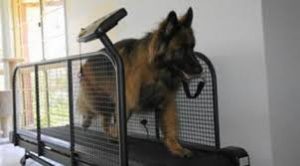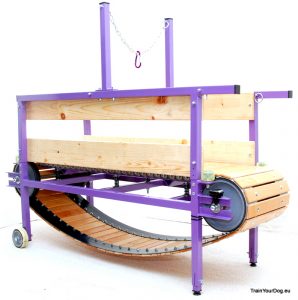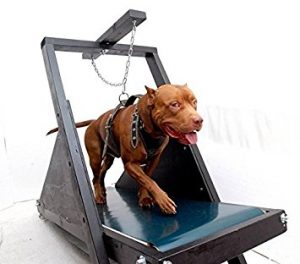The benefits of using a dog treadmill are endless; working dog enthusiasts use them when preparing for athletic / sporting events, confirmation fanciers incorporate them for show ring practice, veterinarians use them for gait analysis & rehabilitating from an injury, dog trainers use them for behaviour management and many dog owners use them as an all year-round conditioning tool when the weather is bad or the dog parks are too busy.
Although there are many different models of dog treadmills on the market today, they can all generally be classed into two different categories, either motorised (electric) or non-motorised (manual).

Motorised Dog Treadmills
Motorised treadmills are basically what you would find at a gym or sports & fitness store. They are electronic motor driven treadmills and the speed and duration of the workout is controlled by the handler. Many motorised dog treadmills also come with a powered incline and a speed-o-meter with timer/distance tracking. They vary in price from $1000 – $5000 depending on the model and brand.
Pros: Reliable power.
Cons: The most expensive, do not support a natural gait, heavy, can be dangerous as the dog is not in control, the speed is capped and they can be noisy.

Non-Motorised Dog Treadmills
The non-motorised dog treadmills can be classed into two different designs; a slatmill or a carpetmill. The slatmillis made up of a number of slats which are joined together in a loop and positioned over a set of rollers. There is normally an attachment point for a harness, and barriers on either side so that the dog remains in position and avoids injury. The dog is in complete control at all times and the slats only turn when the dog moves. Many slatmills on the market also come with a speed-o-meter and timer/distance tracking system. Their typical cost is between $800-$4000.
Pros: Promote natural gait, are not as expensive as electric treadmills, the dog is fully in control and they are very free turning.
Cons: Fairly heavy, can still be quite expensive and noisy.

Like the slatmill, the carpet mill is also 100% powered by the dog and is similar in appearance to a slat mill except its generally all wooden in construction. There are no metal parts and the bed of the mill (the track the dog runs on) is simply a board between two wheels with a carpet going around it for the dog to run on. This mill is not as “free-turning” as a slatmill and therefore the dog has to work a lot harder to move the ‘carpet’. Most carpetmills have an incline option and come with a speed-o-meter time/tracking system. They figure in the range between $400-$600.
Pros: The most cost efficient of the three dog treadmills, the least noisiest and lightest in weight.
Cons: Not as free turning so the dog has to work harder.
No one treadmill type is ‘better’ than the other, it depends on your set up, finances, your dog and your goals. We really like non-motorised treadmills like the slatmills and carpetmills because we like the fact that the they mimic a dogs natural gait better and the dog is in complete control being able to stop when ever he wants to or accelerate / decelerate on his own at different intervals without needing to control it on a speed monitor. We feel this makes the workout more effective when doing interval sprint training and also makes it a lot safer reducing the risk of injury.
Keep them FIT!
FITDOG NATION
PS.
Check out our online shop for some of the best models of slatmills and carpetmills on the market right now!
آپدیت ویندوز هفت آموزش says:
Hey It’s hard to find knowledgeable people on this subject, but you sound like you know what you’re talking about! danke
FITDOG NATION says:
Thank you anything we can do to help just let us know 🙂